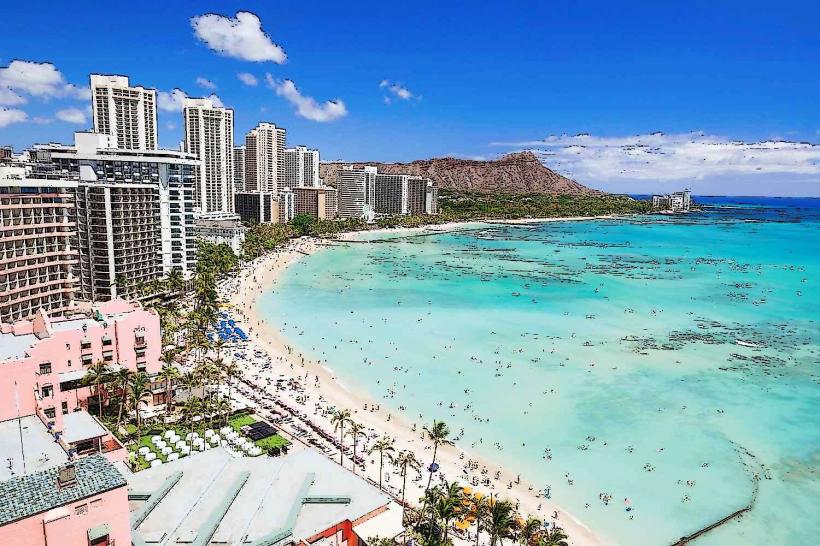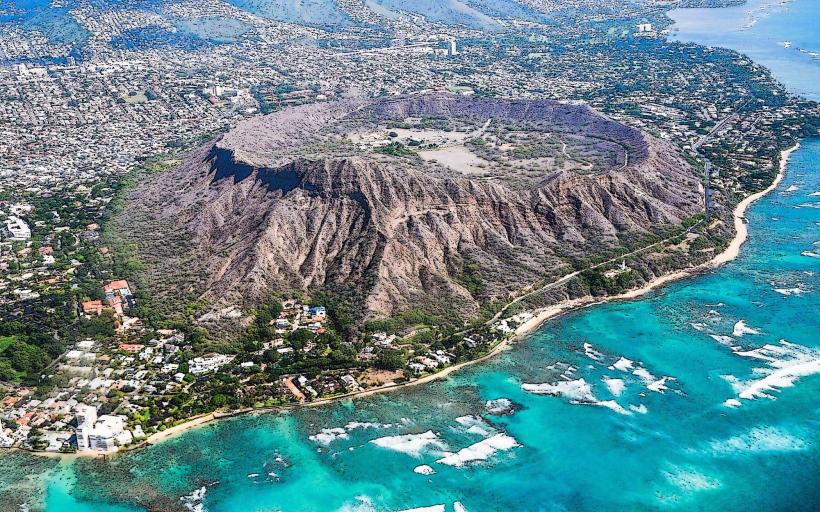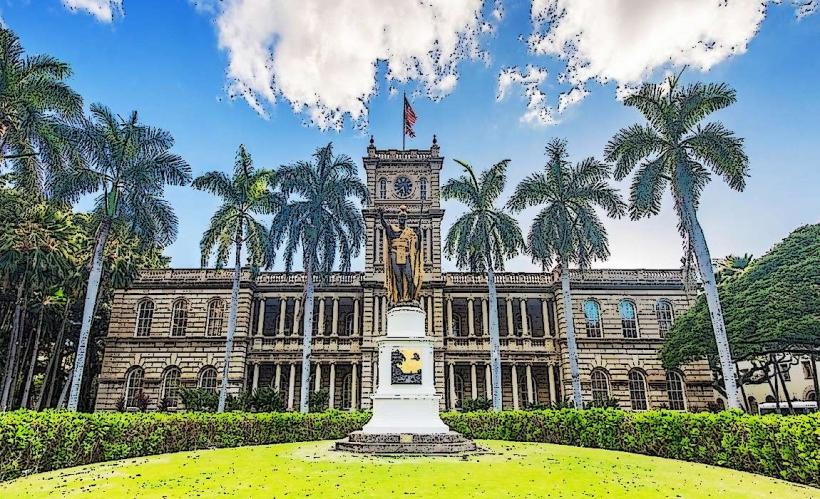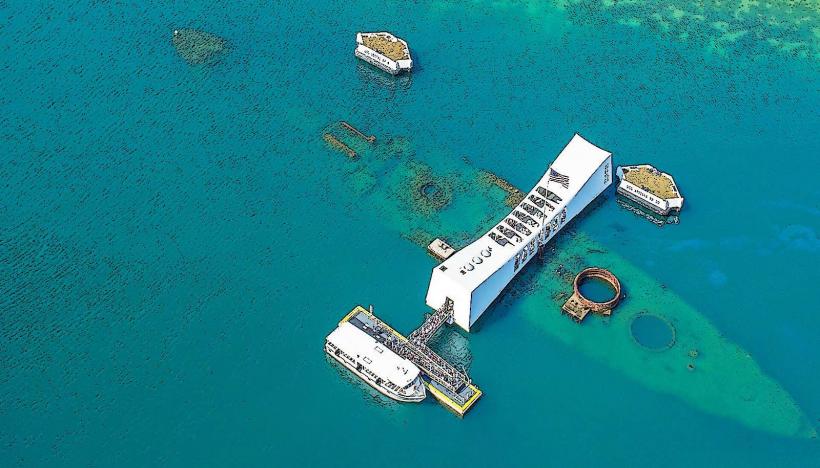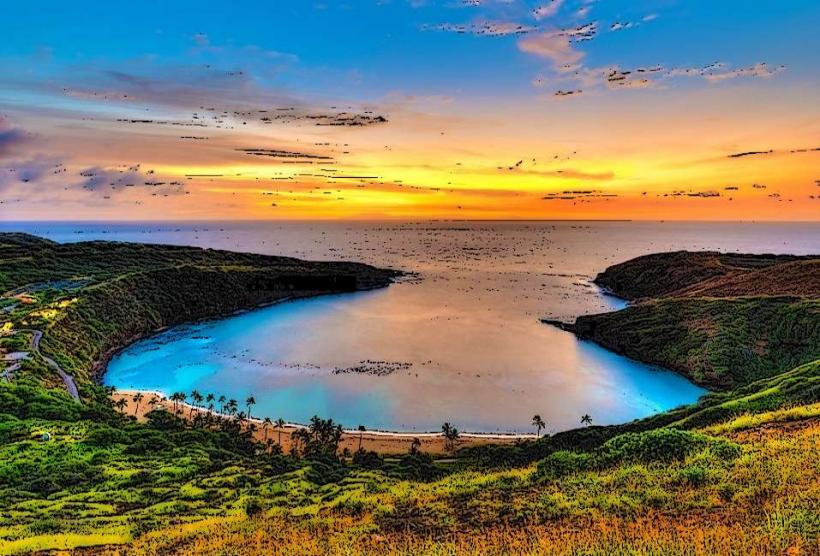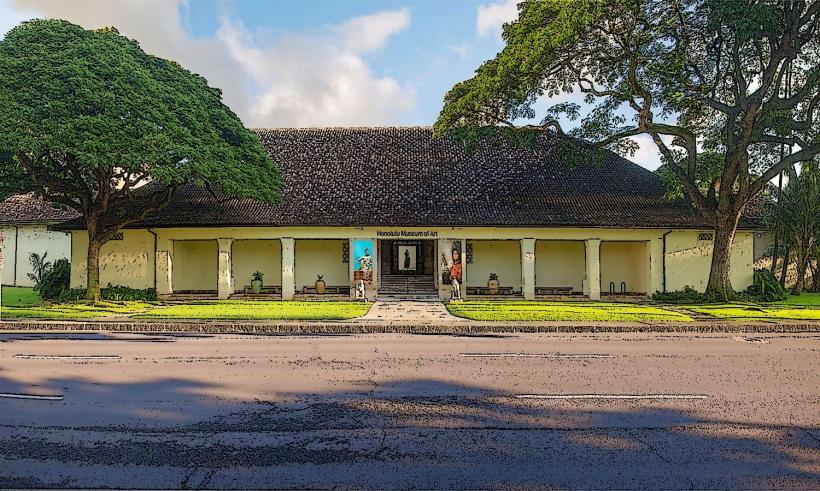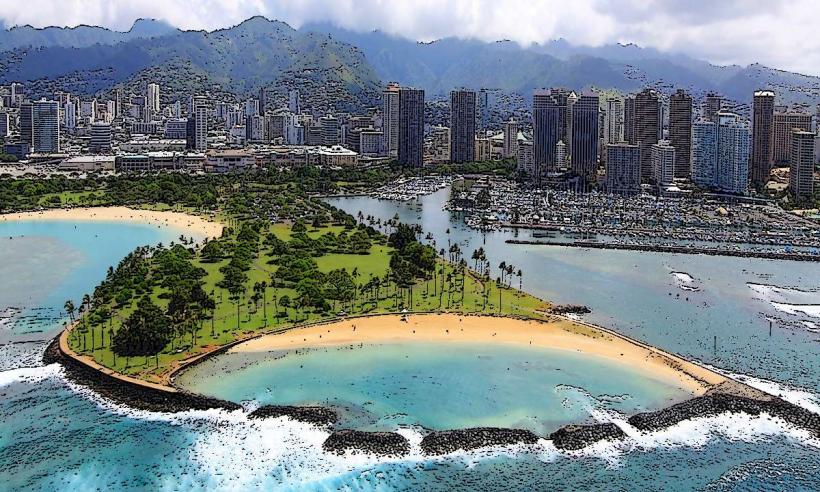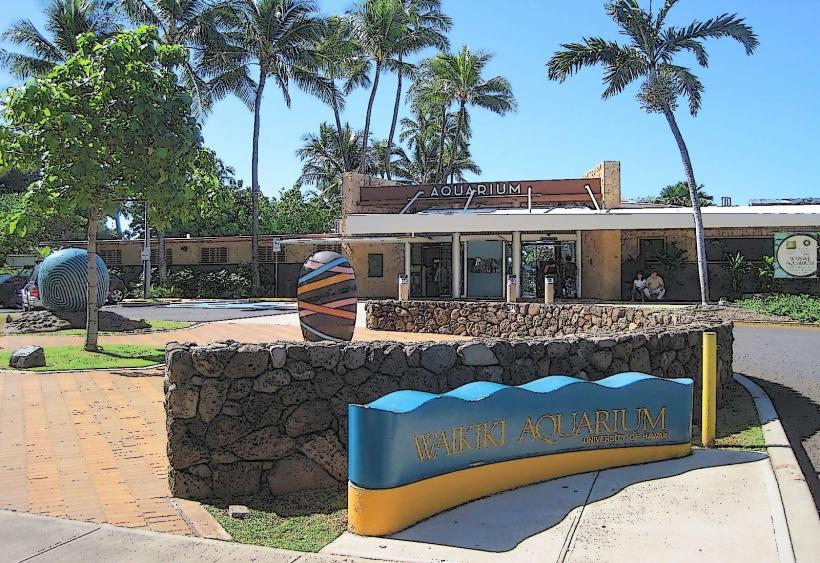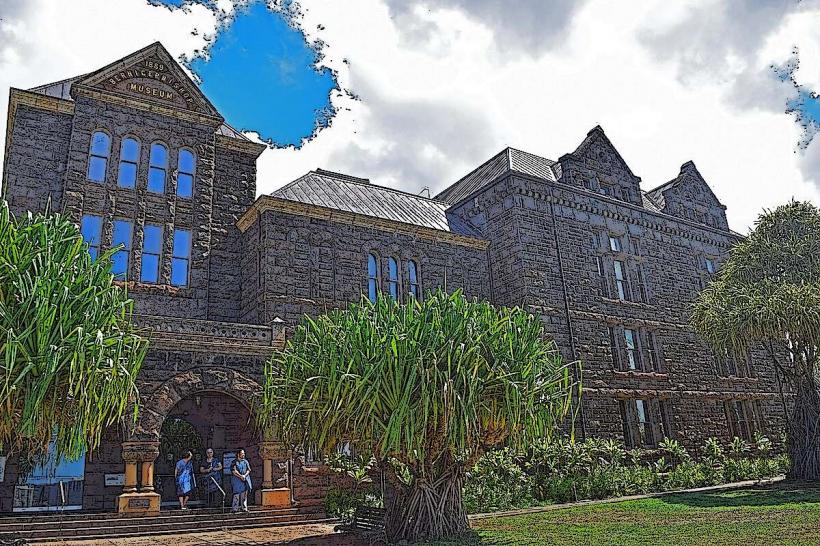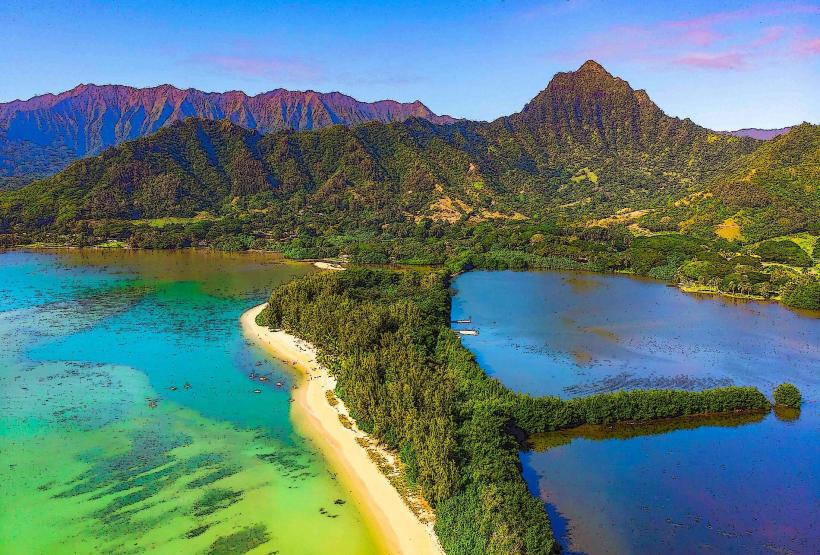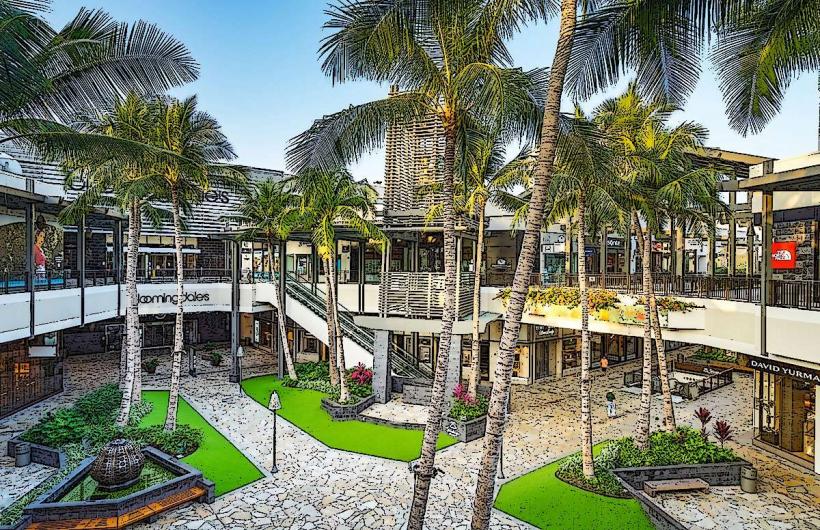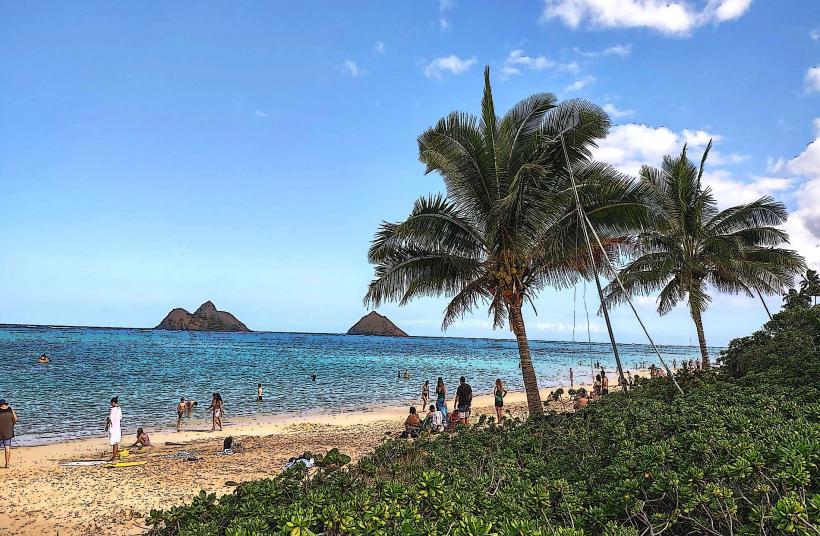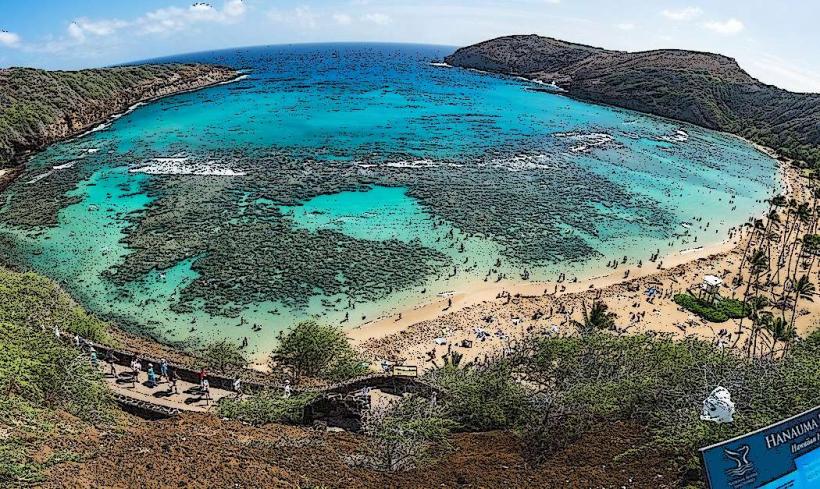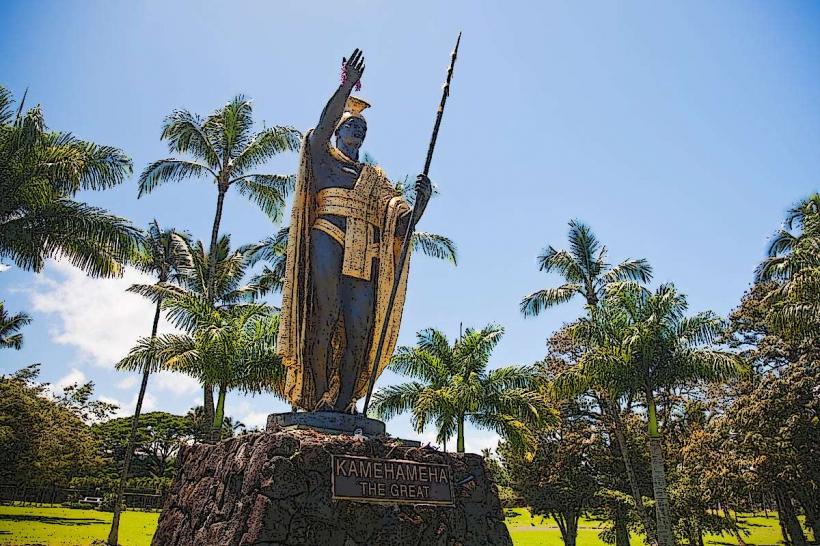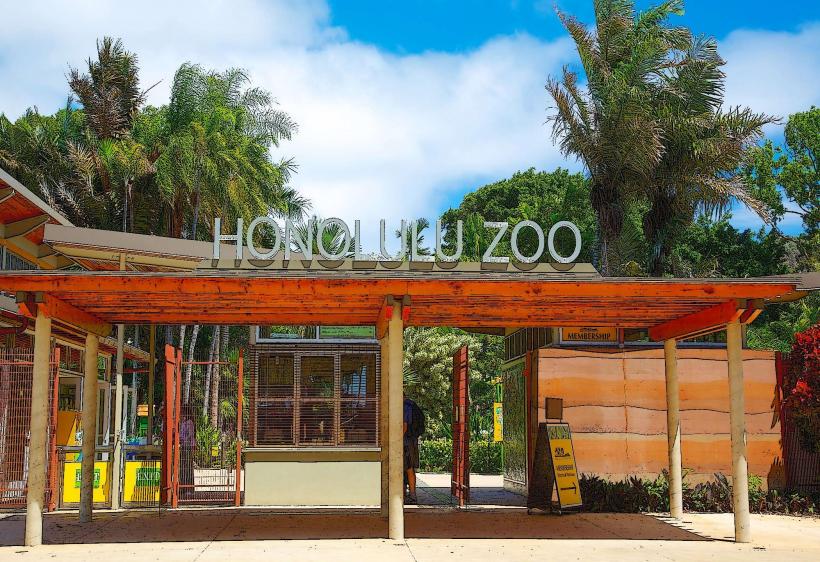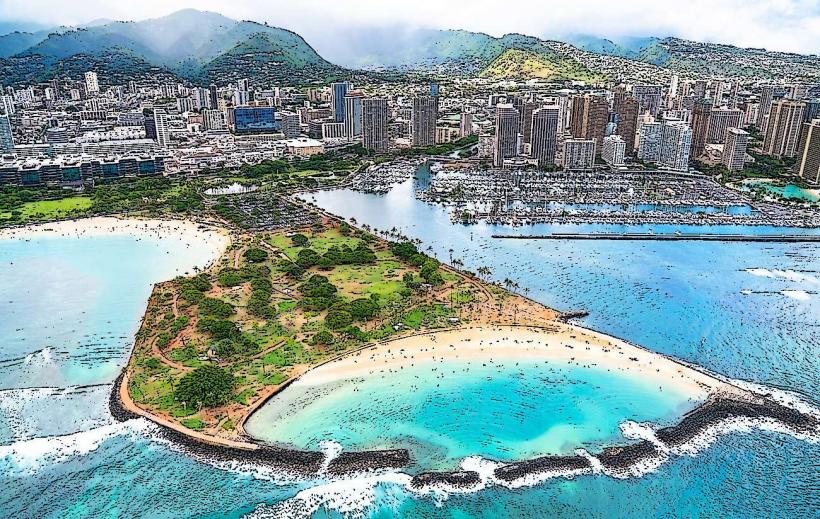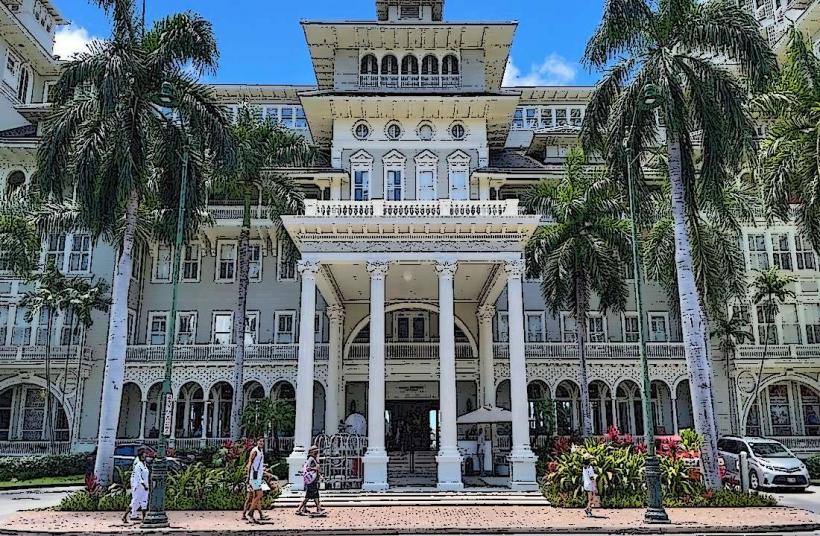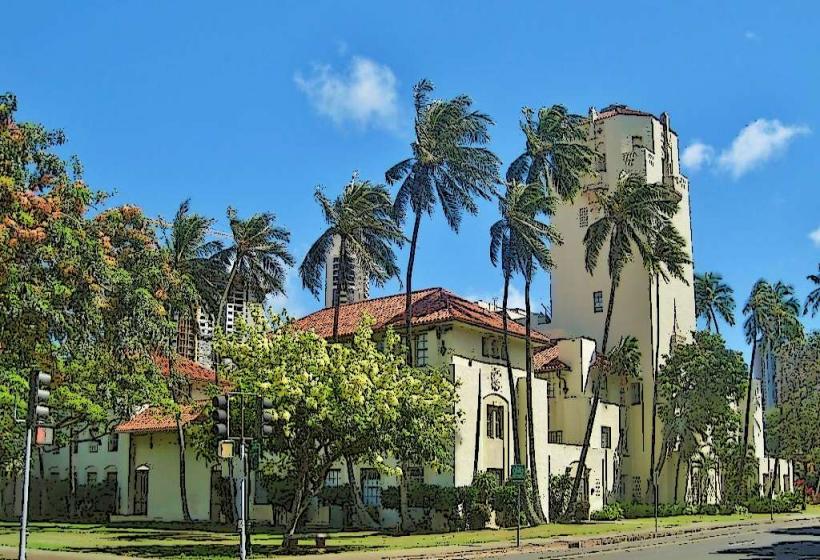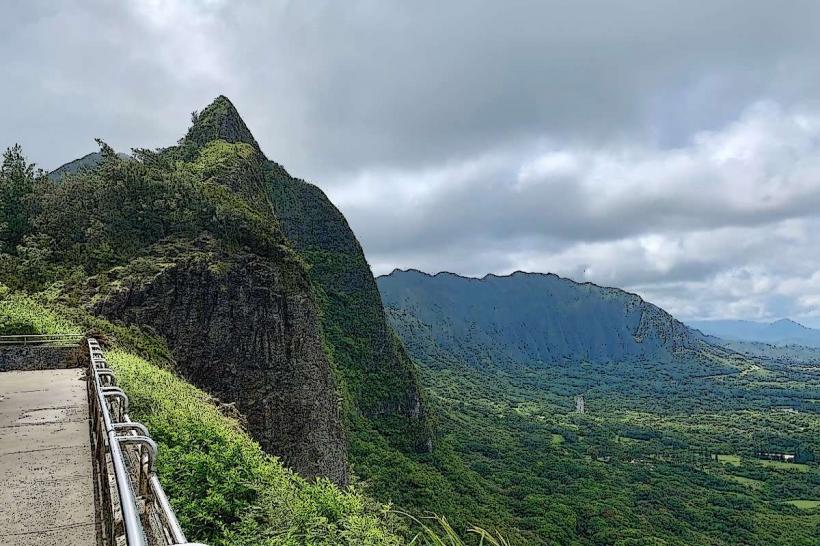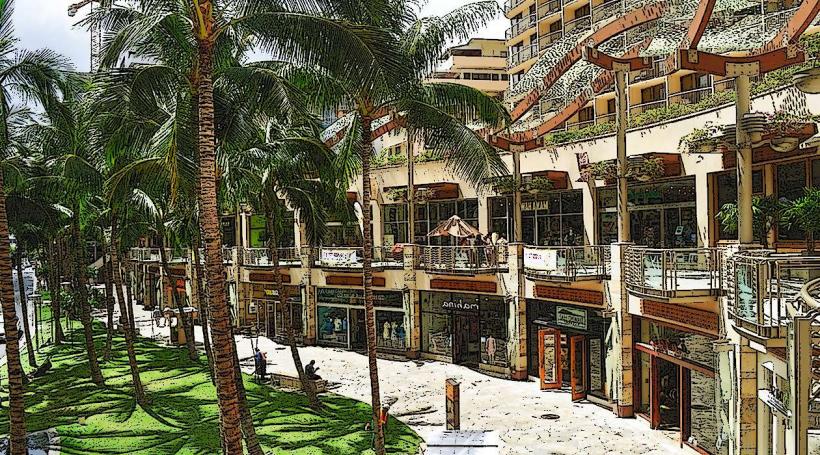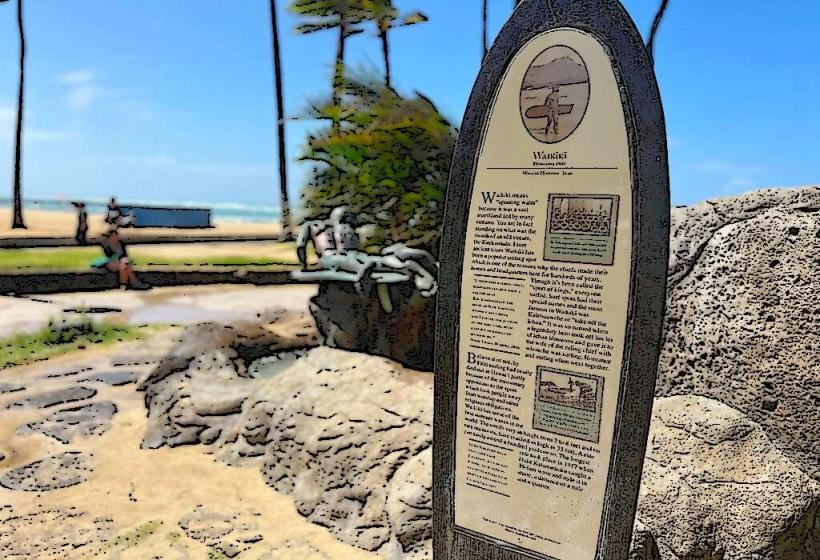Information
Landmark: Makapu'u Point LighthouseCity: Honolulu
Country: USA Hawaii
Continent: North America
Makapuʻu Point Lighthouse is a historic lighthouse located at the easternmost tip of Oʻahu, Hawaii, within the Makapuʻu Point area. This iconic lighthouse stands on a rugged cliff, offering stunning panoramic views of the Pacific Ocean and the surrounding coastline. It is a popular landmark not only for its historical significance but also for its picturesque location and the breathtaking scenery that surrounds it.
History and Significance
1. Construction and Purpose
- Makapuʻu Point Lighthouse was constructed in 1909 to guide ships safely through the treacherous waters near Oʻahu. It was built in response to the growing need for navigational aids as shipping traffic in the Pacific increased in the early 20th century.
- The lighthouse was originally powered by kerosene and later converted to electricity. Its beam could be seen from up to 19 miles at sea, serving as a vital guide for vessels navigating around the island.
2. Architectural Design
- The lighthouse is built in a classic white cylindrical tower design, with a red lantern at the top. The tower is 154 feet (47 meters) above sea level, and the light itself sits 38 feet (12 meters) above the ground.
- The lens system used in the lighthouse is a Fresnel lens, which was one of the most advanced forms of lens technology at the time. The lens focused light from the lamp to project a strong beam that could travel for miles over the ocean.
- The structure also includes a small lighthouse keeper’s cottage, which was originally used for housing the personnel responsible for maintaining the light.
Scenic Location and Views
1. Makapuʻu Point
- Makapuʻu Point is known for its breathtaking ocean views, rugged cliffs, and the dramatic windward coastline. From the lighthouse, visitors can see the clear, blue waters of the Pacific Ocean, and on a clear day, the neighboring Molokaʻi and Lanai islands can be visible.
- The area around the lighthouse offers some of the best views on Oʻahu, with the cliffs dropping steeply into the ocean below, creating a stunning contrast of colors between the bright blue water, rocky coastline, and lush vegetation.
2. Makapuʻu Beach and Tidepools
- Below the lighthouse lies Makapuʻu Beach, a popular spot for swimming, surfing, and sunbathing. Though not suitable for beginner swimmers due to strong currents, it is still a beautiful and tranquil location.
- The area also features tidepools along the coast, where visitors can explore marine life during low tide.
Makapuʻu Point Lighthouse Trail
1. The Hike to the Lighthouse
- One of the most popular activities for visitors to Makapuʻu Point is the Makapuʻu Lighthouse Trail, a relatively easy paved trail that leads to the lighthouse itself. The trail is about 1 mile (1.6 km) long one way and is suitable for all skill levels, making it accessible to both casual walkers and avid hikers.
2. Trail Details
- The hike takes you from the parking lot, along the edge of the cliff, offering breathtaking views of the coastline, Makapuʻu Beach, and the deep-blue ocean. The trail ascends gently to the lighthouse, where visitors can get a close-up look at the structure and enjoy spectacular panoramic views.
- Along the trail, hikers are also treated to views of the Kailua and Waimanalo areas, as well as Koko Head Crater to the west. During the winter months, the trail also offers the possibility of seeing whales as they migrate through the waters off Oʻahu.
3. Accessibility
- The Makapuʻu Lighthouse Trail is open year-round and is free to use. However, it can get crowded during peak times, particularly on weekends. It is a popular spot for both locals and tourists.
- The trail is dog-friendly, but pets must be kept on a leash.
Wildlife and Natural Features
1. Whale Watching
- The lighthouse is a prime spot for whale watching during the winter months (typically from December to April). Humpback whales migrate to Hawaiian waters during this time to breed and give birth, and the cliffs provide an excellent vantage point for spotting these majestic creatures.
- The area is also home to a variety of seabirds and marine life, including frigatebirds, albatrosses, and turtles in the waters below.
2. Native Flora and Fauna
- The surrounding area is rich in native Hawaiian plant species. As visitors hike up to the lighthouse, they can see a mix of dryland forest and coastal vegetation, which is home to many native plants and wildlife.
- The area near the lighthouse is also a popular spot for birdwatching, with several species of seabirds nesting along the cliffs.
Visitor Information
1. Location
- The Makapuʻu Point Lighthouse is located on the southeastern tip of Oʻahu, along Kalanianaʻole Highway (Hwy 72). The lighthouse and trail are part of the Makapuʻu Point State Wayside.
2. Hours of Operation
- The Makapuʻu Lighthouse Trail is open daily, and there are no set hours for visiting the trail itself. The state wayside is generally open from 7:00 AM to 7:00 PM. However, it's always a good idea to check for any updated regulations before visiting.
3. Parking
- There is a parking lot at the Makapuʻu Point State Wayside. It's recommended to arrive early, especially on weekends, as the parking area can fill up quickly. Visitors can also park along the highway, but it’s important to be aware of parking regulations to avoid fines.
4. Tips for Visiting
- Wear sunscreen and bring water, as there is little shade along the trail and the sun can be intense.
- Sturdy footwear is recommended for the hike, as the trail, though paved, can be steep in some areas.
- Binoculars are helpful for whale watching and bird watching, especially during the migration season.
Why Visit Makapuʻu Point Lighthouse?
The Makapuʻu Point Lighthouse offers a combination of natural beauty, historical significance, and outdoor adventure. The lighthouse itself is a symbol of Hawaii's maritime history, and the surrounding cliffs provide some of the best views on the island. Whether you’re interested in history, nature, or just enjoy hiking with a view, this location offers a memorable experience that captures the essence of Oʻahu’s rugged beauty.

